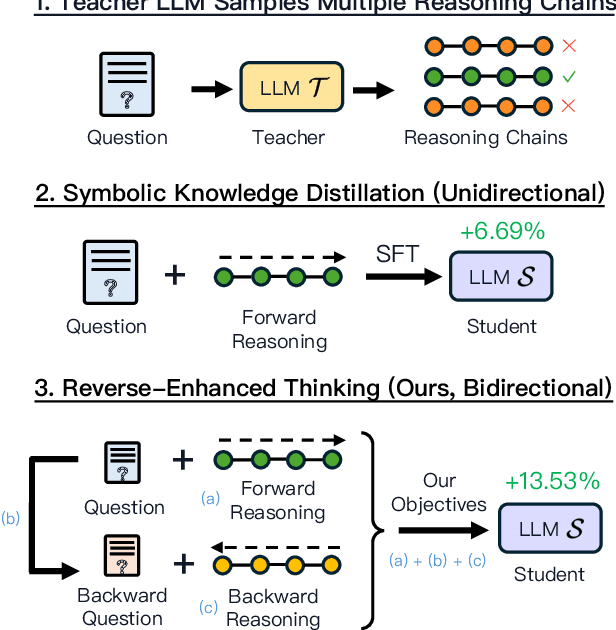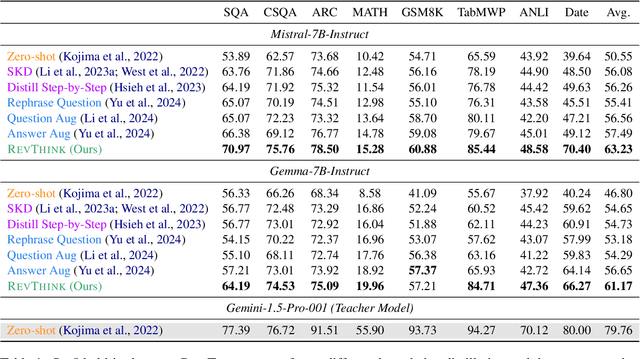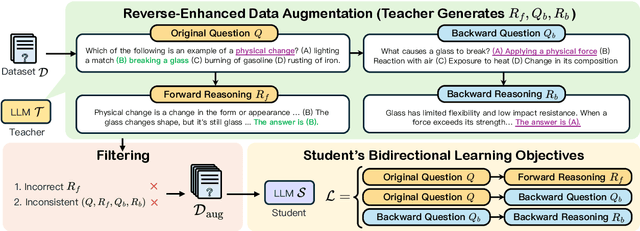Zifeng Wang
InformGen: An AI Copilot for Accurate and Compliant Clinical Research Consent Document Generation
Apr 01, 2025Abstract:Leveraging large language models (LLMs) to generate high-stakes documents, such as informed consent forms (ICFs), remains a significant challenge due to the extreme need for regulatory compliance and factual accuracy. Here, we present InformGen, an LLM-driven copilot for accurate and compliant ICF drafting by optimized knowledge document parsing and content generation, with humans in the loop. We further construct a benchmark dataset comprising protocols and ICFs from 900 clinical trials. Experimental results demonstrate that InformGen achieves near 100% compliance with 18 core regulatory rules derived from FDA guidelines, outperforming a vanilla GPT-4o model by up to 30%. Additionally, a user study with five annotators shows that InformGen, when integrated with manual intervention, attains over 90% factual accuracy, significantly surpassing the vanilla GPT-4o model's 57%-82%. Crucially, InformGen ensures traceability by providing inline citations to source protocols, enabling easy verification and maintaining the highest standards of factual integrity.
In Prospect and Retrospect: Reflective Memory Management for Long-term Personalized Dialogue Agents
Mar 11, 2025Abstract:Large Language Models (LLMs) have made significant progress in open-ended dialogue, yet their inability to retain and retrieve relevant information from long-term interactions limits their effectiveness in applications requiring sustained personalization. External memory mechanisms have been proposed to address this limitation, enabling LLMs to maintain conversational continuity. However, existing approaches struggle with two key challenges. First, rigid memory granularity fails to capture the natural semantic structure of conversations, leading to fragmented and incomplete representations. Second, fixed retrieval mechanisms cannot adapt to diverse dialogue contexts and user interaction patterns. In this work, we propose Reflective Memory Management (RMM), a novel mechanism for long-term dialogue agents, integrating forward- and backward-looking reflections: (1) Prospective Reflection, which dynamically summarizes interactions across granularities-utterances, turns, and sessions-into a personalized memory bank for effective future retrieval, and (2) Retrospective Reflection, which iteratively refines the retrieval in an online reinforcement learning (RL) manner based on LLMs' cited evidence. Experiments show that RMM demonstrates consistent improvement across various metrics and benchmarks. For example, RMM shows more than 10% accuracy improvement over the baseline without memory management on the LongMemEval dataset.
Magnet: Multi-turn Tool-use Data Synthesis and Distillation via Graph Translation
Mar 10, 2025Abstract:Large language models (LLMs) have exhibited the ability to effectively utilize external tools to address user queries. However, their performance may be limited in complex, multi-turn interactions involving users and multiple tools. To address this, we propose Magnet, a principled framework for synthesizing high-quality training trajectories to enhance the function calling capability of large language model agents in multi-turn conversations with humans. The framework is based on automatic and iterative translations from a function signature path to a sequence of queries and executable function calls. We model the complicated function interactions in multi-turn cases with graph and design novel node operations to build reliable signature paths. Motivated by context distillation, when guiding the generation of positive and negative trajectories using a teacher model, we provide reference function call sequences as positive hints in context and contrastive, incorrect function calls as negative hints. Experiments show that training with the positive trajectories with supervised fine-tuning and preference optimization against negative trajectories, our 14B model, Magnet-14B-mDPO, obtains 68.01 on BFCL-v3 and 73.30 on ToolQuery, surpassing the performance of the teacher model Gemini-1.5-pro-002 by a large margin in function calling.
STAR: Stability-Inducing Weight Perturbation for Continual Learning
Mar 03, 2025Abstract:Humans can naturally learn new and varying tasks in a sequential manner. Continual learning is a class of learning algorithms that updates its learned model as it sees new data (on potentially new tasks) in a sequence. A key challenge in continual learning is that as the model is updated to learn new tasks, it becomes susceptible to catastrophic forgetting, where knowledge of previously learned tasks is lost. A popular approach to mitigate forgetting during continual learning is to maintain a small buffer of previously-seen samples and to replay them during training. However, this approach is limited by the small buffer size, and while forgetting is reduced, it is still present. In this paper, we propose a novel loss function, STAR, that exploits the worst-case parameter perturbation that reduces the KL-divergence of model predictions with that of its local parameter neighborhood to promote stability and alleviate forgetting. STAR can be combined with almost any existing rehearsal-based method as a plug-and-play component. We empirically show that STAR consistently improves the performance of existing methods by up to 15% across varying baselines and achieves superior or competitive accuracy to that of state-of-the-art methods aimed at improving rehearsal-based continual learning.
PlanGEN: A Multi-Agent Framework for Generating Planning and Reasoning Trajectories for Complex Problem Solving
Feb 22, 2025Abstract:Recent agent frameworks and inference-time algorithms often struggle with complex planning problems due to limitations in verifying generated plans or reasoning and varying complexity of instances within a single task. Many existing methods for these tasks either perform task-level verification without considering constraints or apply inference-time algorithms without adapting to instance-level complexity. To address these limitations, we propose PlanGEN, a model-agnostic and easily scalable agent framework with three key components: constraint, verification, and selection agents. Specifically, our approach proposes constraint-guided iterative verification to enhance performance of inference-time algorithms--Best of N, Tree-of-Thought, and REBASE. In PlanGEN framework, the selection agent optimizes algorithm choice based on instance complexity, ensuring better adaptability to complex planning problems. Experimental results demonstrate significant improvements over the strongest baseline across multiple benchmarks, achieving state-of-the-art results on NATURAL PLAN ($\sim$8%$\uparrow$), OlympiadBench ($\sim$4%$\uparrow$), DocFinQA ($\sim$7%$\uparrow$), and GPQA ($\sim$1%$\uparrow$). Our key finding highlights that constraint-guided iterative verification improves inference-time algorithms, and adaptive selection further boosts performance on complex planning and reasoning problems.
Universal Model Routing for Efficient LLM Inference
Feb 12, 2025



Abstract:Large language models' significant advances in capabilities are accompanied by significant increases in inference costs. Model routing is a simple technique for reducing inference cost, wherein one maintains a pool of candidate LLMs, and learns to route each prompt to the smallest feasible LLM. Existing works focus on learning a router for a fixed pool of LLMs. In this paper, we consider the problem of dynamic routing, where new, previously unobserved LLMs are available at test time. We propose a new approach to this problem that relies on representing each LLM as a feature vector, derived based on predictions on a set of representative prompts. Based on this, we detail two effective strategies, relying on cluster-based routing and a learned cluster map respectively. We prove that these strategies are estimates of a theoretically optimal routing rule, and provide an excess risk bound to quantify their errors. Experiments on a range of public benchmarks show the effectiveness of the proposed strategies in routing amongst more than 30 unseen LLMs.
Heterogeneous Swarms: Jointly Optimizing Model Roles and Weights for Multi-LLM Systems
Feb 06, 2025



Abstract:We propose Heterogeneous Swarms, an algorithm to design multi-LLM systems by jointly optimizing model roles and weights. We represent multi-LLM systems as directed acyclic graphs (DAGs) of LLMs with topological message passing for collaborative generation. Given a pool of LLM experts and a utility function, Heterogeneous Swarms employs two iterative steps: role-step and weight-step. For role-step, we interpret model roles as learning a DAG that specifies the flow of inputs and outputs between LLMs. Starting from a swarm of random continuous adjacency matrices, we decode them into discrete DAGs, call the LLMs in topological order, evaluate on the utility function (e.g. accuracy on a task), and optimize the adjacency matrices with particle swarm optimization based on the utility score. For weight-step, we assess the contribution of individual LLMs in the multi-LLM systems and optimize model weights with swarm intelligence. We propose JFK-score to quantify the individual contribution of each LLM in the best-found DAG of the role-step, then optimize model weights with particle swarm optimization based on the JFK-score. Experiments demonstrate that Heterogeneous Swarms outperforms 15 role- and/or weight-based baselines by 18.5% on average across 12 tasks. Further analysis reveals that Heterogeneous Swarms discovers multi-LLM systems with heterogeneous model roles and substantial collaborative gains, and benefits from the diversity of language models.
When One LLM Drools, Multi-LLM Collaboration Rules
Feb 06, 2025Abstract:This position paper argues that in many realistic (i.e., complex, contextualized, subjective) scenarios, one LLM is not enough to produce a reliable output. We challenge the status quo of relying solely on a single general-purpose LLM and argue for multi-LLM collaboration to better represent the extensive diversity of data, skills, and people. We first posit that a single LLM underrepresents real-world data distributions, heterogeneous skills, and pluralistic populations, and that such representation gaps cannot be trivially patched by further training a single LLM. We then organize existing multi-LLM collaboration methods into a hierarchy, based on the level of access and information exchange, ranging from API-level, text-level, logit-level, to weight-level collaboration. Based on these methods, we highlight how multi-LLM collaboration addresses challenges that a single LLM struggles with, such as reliability, democratization, and pluralism. Finally, we identify the limitations of existing multi-LLM methods and motivate future work. We envision multi-LLM collaboration as an essential path toward compositional intelligence and collaborative AI development.
A foundation model for human-AI collaboration in medical literature mining
Jan 27, 2025



Abstract:Systematic literature review is essential for evidence-based medicine, requiring comprehensive analysis of clinical trial publications. However, the application of artificial intelligence (AI) models for medical literature mining has been limited by insufficient training and evaluation across broad therapeutic areas and diverse tasks. Here, we present LEADS, an AI foundation model for study search, screening, and data extraction from medical literature. The model is trained on 633,759 instruction data points in LEADSInstruct, curated from 21,335 systematic reviews, 453,625 clinical trial publications, and 27,015 clinical trial registries. We showed that LEADS demonstrates consistent improvements over four cutting-edge generic large language models (LLMs) on six tasks. Furthermore, LEADS enhances expert workflows by providing supportive references following expert requests, streamlining processes while maintaining high-quality results. A study with 16 clinicians and medical researchers from 14 different institutions revealed that experts collaborating with LEADS achieved a recall of 0.81 compared to 0.77 experts working alone in study selection, with a time savings of 22.6%. In data extraction tasks, experts using LEADS achieved an accuracy of 0.85 versus 0.80 without using LEADS, alongside a 26.9% time savings. These findings highlight the potential of specialized medical literature foundation models to outperform generic models, delivering significant quality and efficiency benefits when integrated into expert workflows for medical literature mining.
Reverse Thinking Makes LLMs Stronger Reasoners
Nov 29, 2024



Abstract:Reverse thinking plays a crucial role in human reasoning. Humans can reason not only from a problem to a solution but also in reverse, i.e., start from the solution and reason towards the problem. This often enhances overall reasoning performance as it enables consistency checks between their forward and backward thinking. To enable Large Language Models (LLMs) to perform reverse thinking, we introduce Reverse-Enhanced Thinking (RevThink), a framework composed of data augmentation and learning objectives. In RevThink, we augment the dataset by collecting structured forward-backward reasoning from a teacher model, consisting of: (1) the original question, (2) forward reasoning, (3) backward question, and (4) backward reasoning. We then employ three objectives to train a smaller student model in a multi-task learning fashion: (a) generate forward reasoning from a question, (b) generate a backward question from a question, and (c) generate backward reasoning from the backward question. Experiments across 12 datasets covering commonsense, math, and logical reasoning show an average 13.53% improvement over the student model's zero-shot performance and a 6.84% improvement over the strongest knowledge distillation baselines. Moreover, our method demonstrates sample efficiency -- using only 10% of the correct forward reasoning from the training data, it outperforms a standard fine-tuning method trained on 10x more forward reasoning. RevThink also exhibits strong generalization to out-of-distribution held-out datasets.
 Add to Chrome
Add to Chrome Add to Firefox
Add to Firefox Add to Edge
Add to Edge